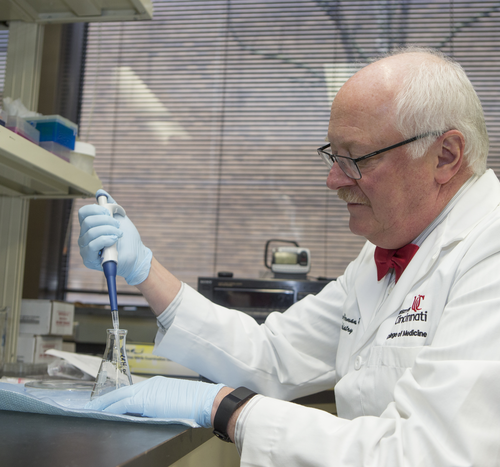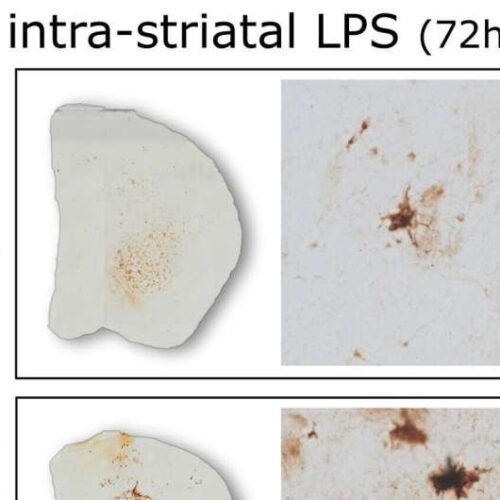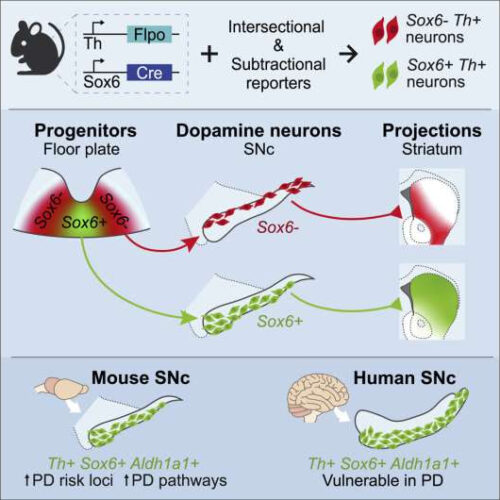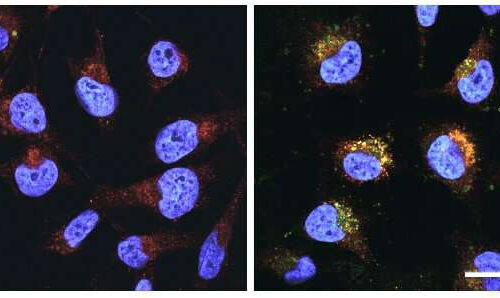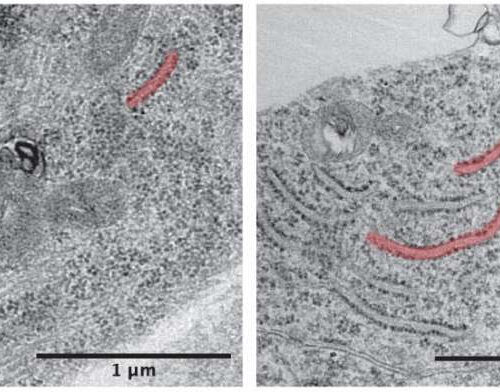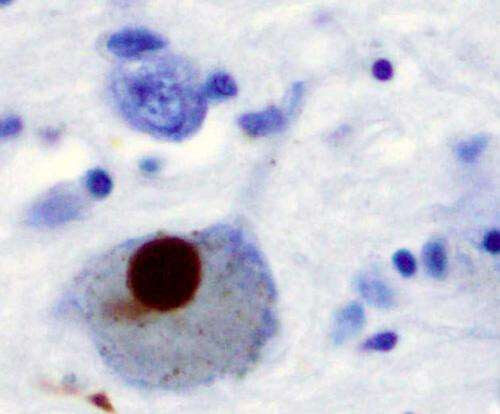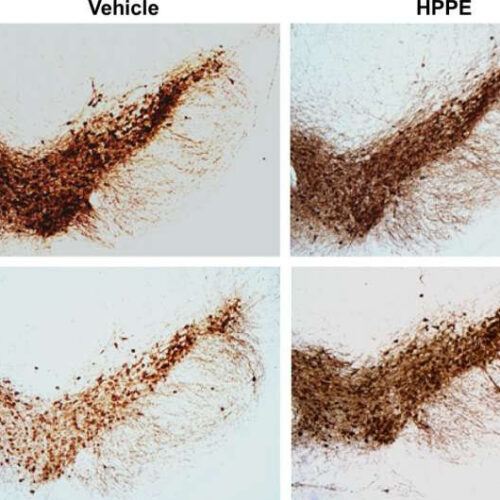UNIVERSITY OF CINCINNATI IMAGE: JAMES HERMAN, Ph.D., AND HIS COLLEAGUES HAVE DEVELOPED A NEW ANIMAL MODEL THAT CAN DELETE STRESS HORMONE RECEPTORS IN A TARGETED PROCESS THAT DOESN’T AFFECT OTHER PARTS OF THE BRAIN.view more CREDIT: PHOTO/ANDREW HIGLEY/UNIVERSITY OF CINCINNATI Stress can have a negative effect on anyone’s health but presents particular challenges for people with...
Tag: <span>Parkinson’s disease</span>
Parkinson’s disease mutation misdirects iron in the brain
by Public Library of Science G2019S LRRK2 induces iron accumulation in inflammatory microglia in vivo. Credit: Mamais A et al., 2021, PLOS Biology, CC-BY 4.0 (creativecommons.org/licenses/by/4.0/) A common gene mutation for Parkinson’s disease drives mislocalization of iron in activated microglia, according to a new study publishing December 16th in the open-access journal PLOS Biology, by Mark Cookson...
Uncovering the degenerative basis of Parkinson’s disease
by Melissa Rohman, Northwestern University Graphical abstract. Credit: DOI: 10.1016/j.celrep.2021.109975 Northwestern investigators have discovered the molecular signature of a subset of dopaminergic neurons with an increased vulnerability to degeneration. The findings shed light on the mechanisms at play within a small subsection of the brain’s substantia nigra, called the pars compacta, which contribute to the development...
Fatty acid length predicts Parkinson’s disease risk
by Will Doss, Northwestern University Long-chain lipids (green) accumulate in the lysosomes (red) of disease cultures (right) but not in healthy cells (left). Credit: Northwestern University Whether or not someone develops Parkinson’s disease may be a game of nanometers. A recent study has demonstrated that chains of fatty acids in the lysosome just one-half nanometer...
Coffee, Smoking and Aspirin Influence Parkinson’s Disease Onset
Those who reported tobacco use had a later median age at onset — 63.5 years — compared to 60.8 years for nonusers. The number of cigarettes per day also was linked to later age of onset, despite making only a small difference. Likewise, a longer duration of smoking resulted in a positive correlation with age...
Combination therapy reduces toxic aggregates in Parkinson’s disease
by Will Doss, Northwestern University Endoplasmic reticulum (red) is small and malformed in Parkinson’s disease (left), but can be rescued with diltiazem and a farnesyl-transferase inhibitor (right). Credit: Northwestern University A new combination of drugs could fix the broken lysosomal enzyme pathway in Parkinson’s disease-afflicted brain cells, according to a Northwestern Medicine study published in Neuron. Improving...
Vascular defects appear to underlie the progression of Parkinson’s disease
by Georgetown University Medical Center Immunohistochemistry for alpha-synuclein showing positive staining (brown) of an intraneural Lewy-body in the Substantia nigra in Parkinson’s disease. Credit: Wikipedia In an unexpected discovery, Georgetown University Medical Center researchers have identified what appears to be a significant vascular defect in patients with moderately severe Parkinson’s disease. The finding could help explain...
What to know about Parkinson’s hallucinations
Parkinson’s disease most commonly causes tremors, stiffness, and difficulties moving, but the condition can also cause hallucinations. Hallucinations affect the senses and can result in people seeing, hearing, feeling, smelling, and tasting things that are not real. Up to 40% of people with Parkinson’s disease experience hallucinations or delusions, and this number increases as the condition progresses....
Deterioration of brain cells in Parkinson’s disease is slowed by blocking the Bach1 protein, preclinical study shows
MEDICAL UNIVERSITY OF SOUTH CAROLINA IMAGE: DOPAMINE PRODUCING BRAIN CELLS (STAINED BROWN) WERE PROTECTED WITH HPPE (RIGHT PANELS) IN NEUROTOXIN-BASED PD MODEL (MPTP; BOTTOM) COMPARED TO VEHICLE CONTROL CELLS (LEFT PANELS). CREDIT: DR. BOBBY THOMAS FROM THE MEDICAL UNIVERSITY OF SOUTH CAROLINA. Parkinson’s disease (PD) is the most common neurodegenerative movement disorder, afflicting more than...
Deterioration of brain cells in Parkinson’s disease is slowed by blocking the Bach1 protein, preclinical study shows
by Medical University of South Carolina Dopamine producing brain cells (stained brown) were protected with HPPE (right panels) in neurotoxin-based PD model (MPTP; bottom) compared to vehicle control cells (left panels). Credit: Dr. Bobby Thomas from the Medical University of South Carolina. Parkinson’s disease (PD) is the most common neurodegenerative movement disorder, afflicting more than 10...

